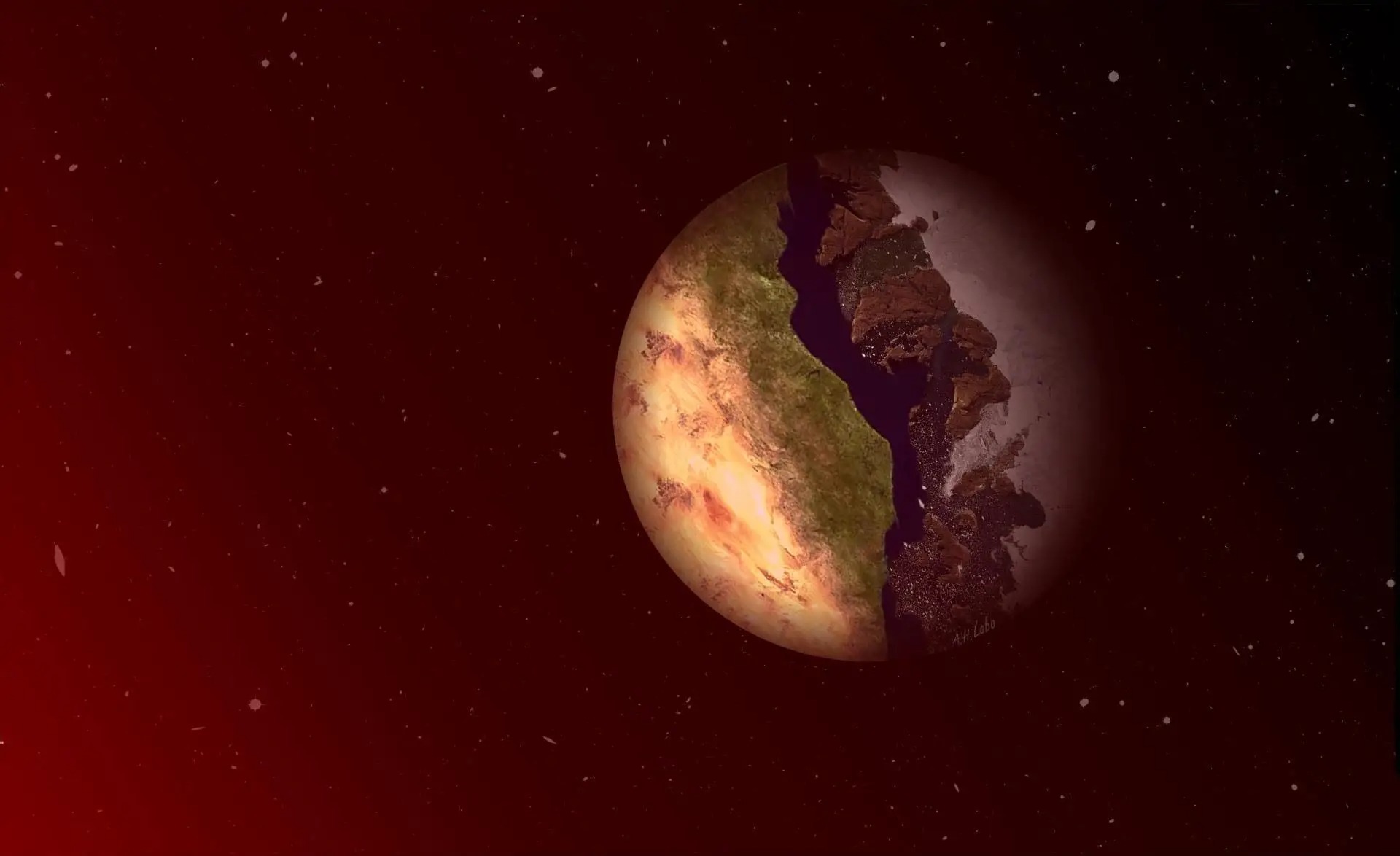Exoplanets have already proved to us that they have a very strange environment. But one feature that is relatively common among exoplanets and absent among the planets of our Solar System is tidal locking. In this case, one side of the planet is always facing its star, and the other is facing space. On such a planet, a constant hot day is established on one side, and an endless cold night on the other. Of course, this is not a very comfortable environment for the origin of life. Recent studies show that these exoplanets may be quite habitable, but in a narrow strip separating both sides — the terminator zone.

The terminator zone is a ring around a planet between the hot side, called the day side, and the cold side, called the night side. This zone separates two completely different climates.
“On such a “locked” planet, it can be very hot during the day, and the night side will have a constant cold. Moreover, the night side can be covered with huge glaciers,” explained lead researcher Ana Lobo from the University of California.
The researchers modeled such planets using the same software that is used to simulate the Earth’s climate, but adjusted for factors such as the rotation of the planet. They find that despite the existence of extreme temperatures nearby, the terminator zone may have a comfortable temperature to maintain liquid water on the surface — an important component of potential support for life. However, in order for this to work, the planet needs a balance of water. If the planet is mostly covered with water, it will evaporate from the daytime side and will envelop the planet with steam. But if in the terminator zone liquid water can remain on the surface, and at the appropriate pressure and temperature flow in the form of rivers.
This study is fascinating because it expands the range of planets we can explore while looking for evidence of life beyond Earth. Tidally locked planets often exist around M-dwarf stars that are dimmer than our Sun and are among the most common stars in the galaxy. If any of these stars contain such planets, then the range of exoplanets where we can search for life expands significantly.
Previously, we reported on how to search for exoplanets.
According to The Astrophysical Journal.
Follow us on Twitter to get the most interesting space news in time
https://twitter.com/ust_magazine

